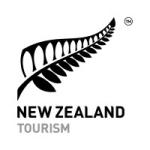Iconic NZ surf breaks officially protected
New Zealand’s reputation as one of the world’s top surfing spots has been future-proofed by new legislation that protects the country’s most famous breaks.
Under the revised New Zealand Coastal Policy Statement which came into effect last week (3.12.2010), 19 top surf breaks will be officially protected from inappropriate use and development.
New Zealand is known for quality waves, plenty of choice and relatively few surfers and the new legislation has been welcomed by the surfing fraternity as well as costal planners and environmentalists.
Seven surf regions
The breaks are located in seven New Zealand regions from Northland to Otago in the south, and include well known surfing spots in Raglan, Taranaki, Gisborne, the Coromandel Peninsula and Kaikoura.
The policy, which was proposed by the Department of Conservation, effectively awards the surf breaks national park status and is designed to give local authorities clearer direction on protecting and managing New Zealand’s coastal environment.
It covers protection of water quality, access or the placement of anything in or on the water that may hinder swell reaching the breaks, and prevents anything that may adversely affect their use and enjoyment.
Protection for further unnamed surf breaks will also be available with the new legislation requiring local authorities and decision makers to preserve the ‘natural character of the coastal environment’.
Surfbreak Protection
Veteran Kiwi surfer Paul Shanks who is president of the New Zealand Surfbreak Protection Society, welcomed the new legislation saying past and present governments should be congratulated for endorsing it.
"It is definitely a step in the right direction and everyone who helped get recognition for these surf breaks deserves a pat on the back," he said.
Shanks said councils were required to action the new policy as soon as practicable.
The list of protected surf breaks was developed by a board of inquiry after submissions from national surfing organisations such as Surfbreak Protection Society and individual surfers, as well as related environmental
evidence.
Surfing reserves
Environmental damage to surf breaks around the world is a widespread problem and surfing reserves have been established in other surfing nations such as Australia.
New South Wales and Victoria established surfing reserves when the world- famous break in Mundaca, Spain disappeared after dredging to deepen a harbour.
New Zealand’s 19 officially protected surf breaks are:
-
Northland
Peaks - Shipwreck Bay
Peaks - Super tubes - Mukie 2 - Mukie 1
-
Waikato
Manu Bay - Raglan
Whale Bay - Raglan
Indicators - Raglan
-
Taranaki
Waiwhakaiho
Stent Road - Backdoor Stent - Farmhouse Stent
-
Gisborne
Makorori Point - Centres
Wainui - Stock Route - Pines - Whales
The Island
-
Coromandel
Whangamata Bar
-
Kaikoura
Mangamaunu
Meatworks
-
Otago / Southland
The Spit
Karitane
Whareakeake / Murdering Bay
Papatowai
Background: Surfing in New Zealand
New Zealand is seen as one of the world’s top surfing spots with quality waves, plenty of choice and relatively few surfers.
The main source of swell for both the North and South islands is from the low pressure systems of the roaring forties but New Zealand is fortunate to pick up swell from just about anywhere.
Waves can be generated from the south, west from the Tasman Sea, north from cyclone systems and east from depressions.
New Zealand’s best known surf spot is Raglan in the North Island - half way down the west coast with a good left hand point that appears endless.
The Taranaki Peninsula offers lots of quality spots within a short distance. It is renowned for great waves and finding the ideal wind conditions is as easy as driving along the coast road - Surf Highway 45.
The South Island is colder particularly in winter but quality, empty surf more than makes up for the temperature. Top surfing spots are the Catlins on the south east coast where big wave surfing is the key attraction, the Dunedin coast which offers a variety of breaks, and Kaikoura's powerful reefs and points.
